
How to Use Red LED: Examples, Pinouts, and Specs
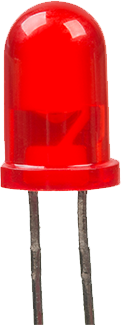
 Design with Red LED in Cirkit Designer
Design with Red LED in Cirkit DesignerIntroduction
A Red LED (Light Emitting Diode) is a semiconductor device that emits red light when an electric current flows through it. It is one of the most commonly used LEDs due to its simplicity, low power consumption, and versatility. Red LEDs are widely used in electronic circuits as indicators, status lights, and in displays.
Explore Projects Built with Red LED
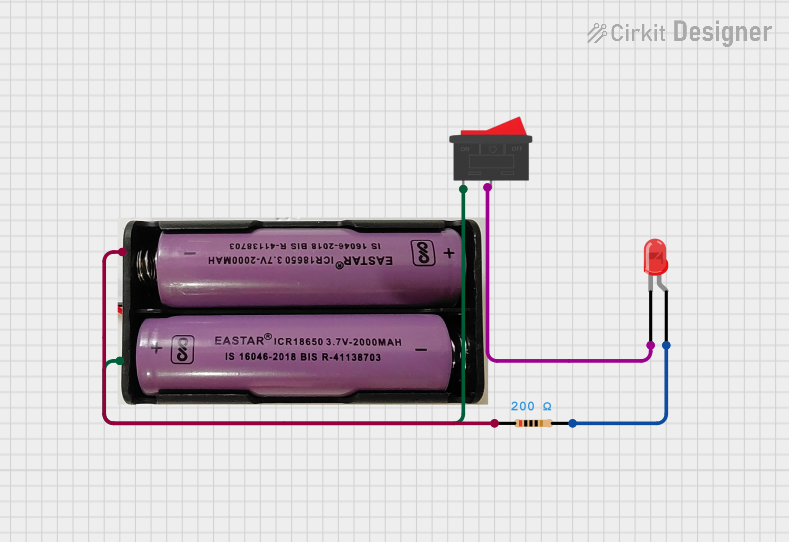
 Open Project in Cirkit Designer
Open Project in Cirkit Designer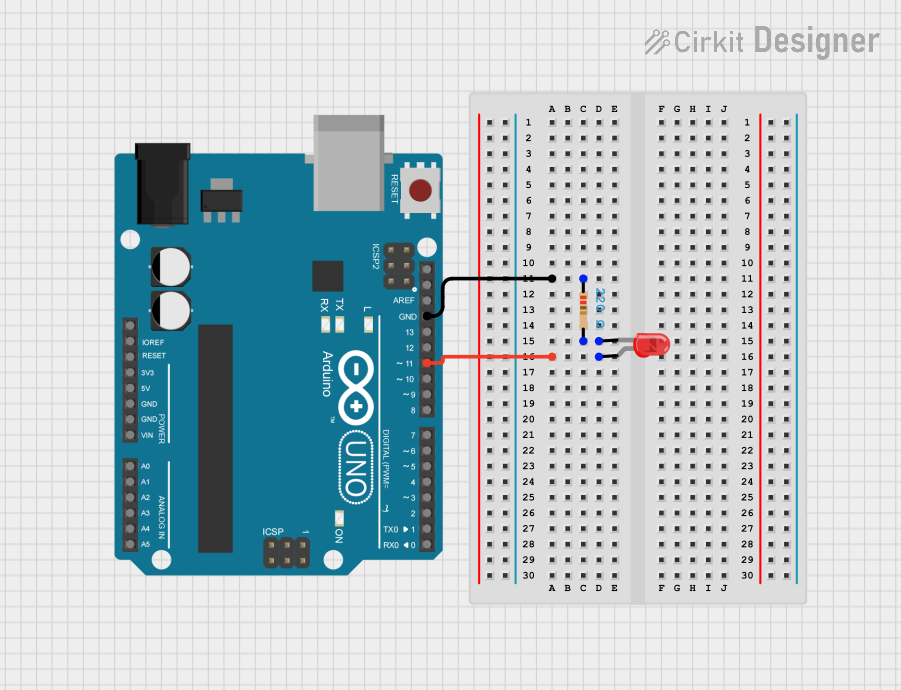
 Open Project in Cirkit Designer
Open Project in Cirkit Designer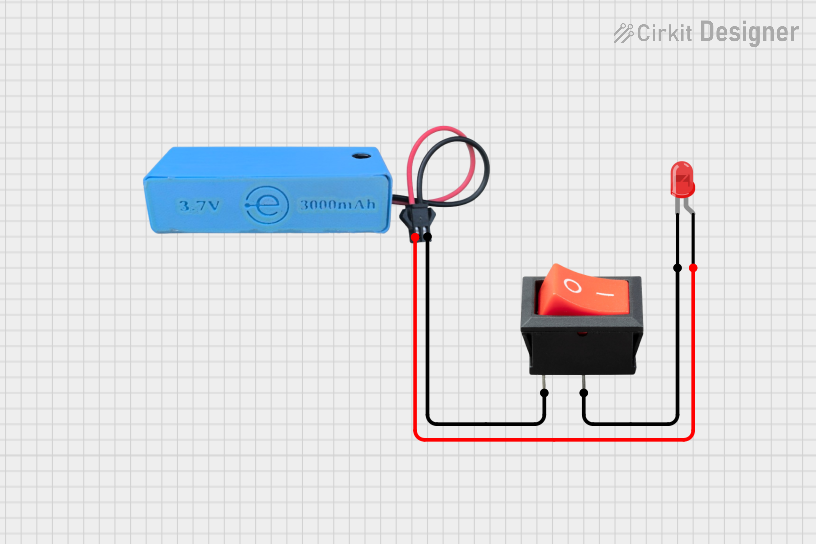
 Open Project in Cirkit Designer
Open Project in Cirkit Designer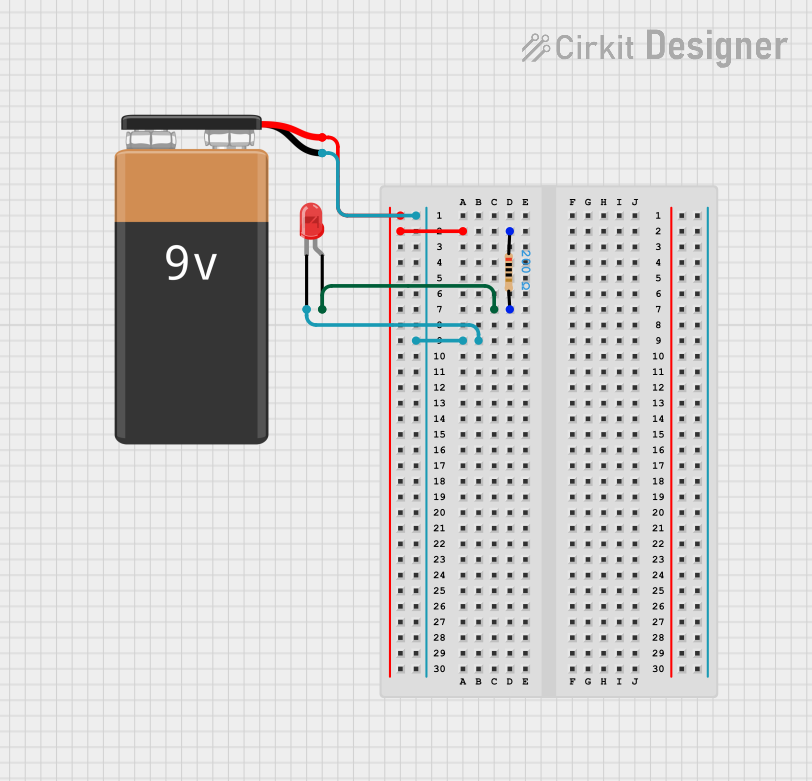
 Open Project in Cirkit Designer
Open Project in Cirkit DesignerExplore Projects Built with Red LED

 Open Project in Cirkit Designer
Open Project in Cirkit Designer
 Open Project in Cirkit Designer
Open Project in Cirkit Designer
 Open Project in Cirkit Designer
Open Project in Cirkit Designer
 Open Project in Cirkit Designer
Open Project in Cirkit DesignerCommon Applications and Use Cases
- Power and status indicators in electronic devices
- Digital displays (e.g., seven-segment displays)
- Signal lights in control panels
- Decorative lighting and DIY projects
- Educational electronics kits
Technical Specifications
Below are the typical specifications for a standard 5mm Red LED. Note that values may vary slightly depending on the manufacturer.
| Parameter | Value |
|---|---|
| Forward Voltage (Vf) | 1.8V to 2.2V |
| Forward Current (If) | 20mA (typical) |
| Maximum Current (Imax) | 30mA |
| Wavelength | 620nm to 645nm (red light) |
| Viewing Angle | 20° to 30° |
| Reverse Voltage (Vr) | 5V (maximum) |
| Power Dissipation | 60mW (maximum) |
| Package Size | 5mm (standard) |
Pin Configuration and Descriptions
A Red LED has two pins: the anode (positive) and the cathode (negative). The table below describes the pin configuration:
| Pin Name | Description | Identification Method |
|---|---|---|
| Anode | Positive terminal; connects to the positive side | Longer leg of the LED |
| Cathode | Negative terminal; connects to ground | Shorter leg or flat edge on case |
Usage Instructions
How to Use the Red LED in a Circuit
Determine the Resistor Value: To prevent damage, always use a current-limiting resistor in series with the LED. Calculate the resistor value using Ohm's Law: [ R = \frac{V_{supply} - V_f}{I_f} ]
- (V_{supply}): Supply voltage
- (V_f): Forward voltage of the LED (1.8V to 2.2V)
- (I_f): Desired forward current (typically 20mA)
For example, with a 5V supply and a forward voltage of 2V: [ R = \frac{5V - 2V}{0.02A} = 150\Omega ]
Connect the LED:
- Connect the anode (longer leg) to the positive side of the circuit.
- Connect the cathode (shorter leg) to the negative side (ground) through the resistor.
Power the Circuit: Apply the appropriate voltage to the circuit. The LED will emit red light.
Important Considerations and Best Practices
- Polarity Matters: LEDs are polarized components. Reversing the polarity may prevent the LED from lighting up or damage it.
- Avoid Overcurrent: Exceeding the maximum current rating (30mA) can permanently damage the LED.
- Use a Resistor: Always use a current-limiting resistor to protect the LED.
- Heat Management: While Red LEDs generate minimal heat, ensure proper ventilation in high-power applications.
Example: Connecting a Red LED to an Arduino UNO
Below is an example of how to connect and control a Red LED using an Arduino UNO:
Circuit Setup
- Connect the anode of the LED to digital pin 9 on the Arduino through a 220Ω resistor.
- Connect the cathode of the LED to the Arduino's GND pin.
Arduino Code
// Red LED Blink Example
// This code blinks a Red LED connected to pin 9 of the Arduino UNO.
const int ledPin = 9; // Define the pin connected to the LED
void setup() {
pinMode(ledPin, OUTPUT); // Set the LED pin as an output
}
void loop() {
digitalWrite(ledPin, HIGH); // Turn the LED on
delay(1000); // Wait for 1 second
digitalWrite(ledPin, LOW); // Turn the LED off
delay(1000); // Wait for 1 second
}
Troubleshooting and FAQs
Common Issues and Solutions
LED Does Not Light Up:
Cause: Incorrect polarity.
Solution: Ensure the anode is connected to the positive side and the cathode to ground.
Cause: No current-limiting resistor or incorrect resistor value.
Solution: Use a resistor with the correct value (e.g., 150Ω for a 5V supply).
LED is Dim:
- Cause: Resistor value too high.
- Solution: Recalculate the resistor value for the desired brightness.
LED Burns Out:
- Cause: Excessive current.
- Solution: Use a resistor to limit the current to 20mA.
LED Flickers:
- Cause: Unstable power supply.
- Solution: Ensure a stable and regulated power source.
FAQs
Q: Can I connect a Red LED directly to a 3.3V or 5V power supply?
A: No, you must use a current-limiting resistor to prevent excessive current from damaging the LED.
Q: How do I know the polarity of the LED?
A: The longer leg is the anode (positive), and the shorter leg is the cathode (negative). Alternatively, look for the flat edge on the LED case, which marks the cathode.
Q: Can I use a Red LED with a PWM signal?
A: Yes, Red LEDs can be dimmed or controlled using a PWM (Pulse Width Modulation) signal from a microcontroller like an Arduino.
Q: What happens if I exceed the maximum current rating?
A: Exceeding the maximum current rating can cause the LED to overheat and fail permanently.
By following these guidelines, you can effectively use a Red LED in your electronic projects!